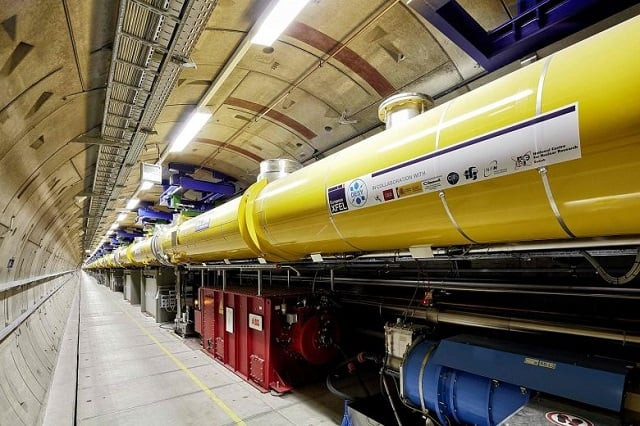
The mega-project will generate extremely intense laser flashes, at a mind-boggling rate of 27,000 per second, inside a 3.4-kilometre (2.1-mile) tunnel up to 38 metres (125 feet) below the northern city of Hamburg.
This ultra-fast strobe light will allow researchers for the first time to look deep inside matter and take snapshots and films at the nano-level, scientists at the European XFEL project say.
The man who might lead Uber packs travel, money smarts
Teams from around the world will be able to, for instance, map the atomic details of viruses, take 3-D images of the molecular make-up of cells or film chemical reactions as they happen.
The huge laser is "like a camera and a microscope that will make it possible to see more tiny details and processes in the nano-world than ever before," Robert Feidenhans'l, chairman of the project's management board, told AFP.
The applications are sweeping -- images of biomolecules may help understand and treat illnesses, while a peek inside a building material might explain why it tears or cracks.
The light beams can also be bundled to create extreme pressure and temperatures to study process like those at the Earth's core.
The 1.5-billion-euro ($1.7 billion) facility, which took eight years to build with funding from 11 countries, has been hailed as one of the largest and most ambitious European research projects ever.
It boasts a list of superlatives: the light's brilliance is a billion times higher than that of the best conventional X-ray sources.
The silicon mirrors along which the light is bounced, produced in Japan, are so smooth that any bump on their surface measures no more than a millionth of a millimetre, Spiegel magazine reported.
Some 800 guests have been invited for the launch of the project, which stretches from inside Hamburg to Schenefeld in the adjoining state of Schleswig-Holstein.
Germany has coughed up 58 per cent of the cost and Russia 27 percent, with scientific cooperation continuing despite geopolitical tensions.
The other partners, with stakes of one to three percent each, are Denmark, France, Hungary, Italy, Poland, Slovakia, Spain, Sweden and Switzerland. Britain is in the process of joining.
The project was spearheaded by the Hamburg research centre Deutsches Elektronen-Synchrotron (Desy), which has operated a particle accelerator since the 1960s.
XFEL -- which stands for X-Ray Free-Electron Laser -- is all about looking at things at the hard-to-fathom nano-level. (For a rough idea, a human hair is about 100,000 nanometres thick.)
Google, Apple face off over augmented reality technology
It works by blasting a powerful laser into metal which sends bundles of electrons flying through a superconducting linear accelerator, the world's longest at 1.7 kilometres.
As they hurtle through the tube, which is supercooled to minus 271 degrees centigrade, they are charged by microwaves in order to reach nearly the speed of light.
In the next section, thousands of alternating magnets send the electrons onto a tight "slalom" course.
The electrons gather into a multitude of ultra-thin discs, allowing them to emit their light in sync and produce intense X-ray flashes of laser light.
When these hit a material, they create a strobe-like series of crisp pictures with an ultrashort "shutter speed" of a billionth of a second, which can be assembled to create 3-D images or films.


















COMMENTS
Comments are moderated and generally will be posted if they are on-topic and not abusive.
For more information, please see our Comments FAQ